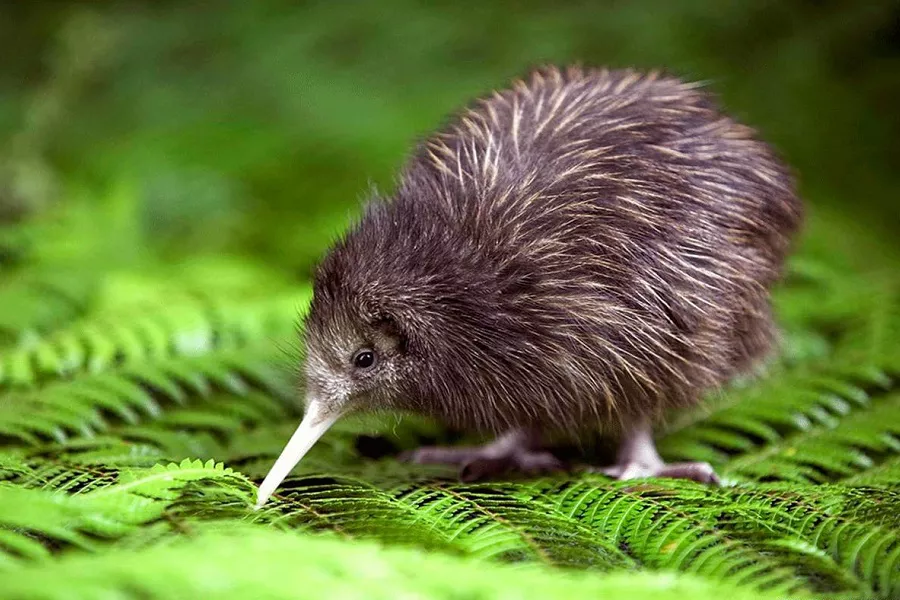Kiwi birds are fascinating, flightless birds native to New Zealand. They are known for their distinctive appearance, with small wings, long beaks, and fluffy feathers. But what do kiwi birds eat? In this article, we will explore the diet of kiwi birds in detail.
General Overview of Kiwi Bird Diets:
Kiwi birds are primarily omnivorous, with their diet varying depending on the species and the specific habitat they inhabit. While there are five recognized species of kiwi birds, including the North Island brown kiwi, the great spotted kiwi, the little spotted kiwi, the rowi kiwi, and the tokoeka kiwi, they all exhibit similar dietary patterns.
Invertebrates as a Primary Food Source:
Invertebrates play a vital role in the kiwi bird’s diet, constituting a significant portion of their daily intake. Earthworms, spiders, beetles, larvae, and other insects are key sources of protein for kiwi birds. These food items are obtained by probing the soil with their long, slender bills, which they use to detect and extract invertebrates from the ground.
Fruit:
Some species of kiwi birds also include fruits as an important component of their diet. They are known to consume a variety of fruits, including berries, seeds, and other fleshy plant materials. Fruits provide essential vitamins, minerals, and carbohydrates, complementing the protein-rich invertebrates in their diet.
Seeds and Leaves:
While the primary focus of kiwi bird diets revolves around invertebrates and fruits, they have been observed consuming seeds, and leaves. They particularly favor the fruit of certain tree species such as rimu, totara, and kahikatea. However, such plant matter intake is generally limited and is not a significant part of their overall diet.
Feeding Habits of Kiwi Birds:
Kiwi birds are nocturnal, meaning they are most active at night. They spend most of their day resting in burrows or hollow trees, and venture out at dusk to hunt for food. Their foraging behavior is slow and deliberate, as they use their beaks to probe the soil for prey.
The long beak of a kiwi bird is adapted to its feeding habits. It is narrow and flexible, allowing the bird to move it around in search of prey. The nostrils are located at the tip of the beak, which allows the bird to sniff out prey hidden below the surface.
Kiwi birds have a unique digestive system that allows them to extract nutrients from their food efficiently. Food passes through their gut quickly, which is essential for a bird that needs to conserve energy while foraging at night.
Conservation Implications:
The diet of kiwi birds plays a critical role in their conservation and management. It is important to understand the specific dietary requirements of each kiwi species to develop appropriate conservation strategies. Protecting and restoring their natural habitats, which provide a diverse range of invertebrates and fruit sources, is vital for sustaining healthy populations of kiwi birds.
Furthermore, controlling introduced predators, such as stoats, ferrets, and cats, is essential, as they pose a significant threat to kiwi birds and their food sources. Efforts to create predator-free islands or fenced sanctuaries have proven effective in preserving kiwi populations by maintaining suitable habitats and preventing predation.
Conclusion:
The dietary habits of kiwi birds encompass a diverse range of invertebrates, fruits, and occasionally plant matter. These unique flightless birds have adapted to obtain the necessary nutrients from their environment, predominantly through their exceptional sense of smell and probing beaks. Understanding and protecting the natural food sources of kiwi birds are vital steps in ensuring the continued survival and prosperity of these remarkable species.
By implementing effective conservation measures, including habitat preservation, predator control, and ecosystem management, we can contribute to the preservation of kiwi birds and the overall biodiversity of New Zealand’s ecosystems. Through collective efforts, we can secure a brighter future for these beloved, yet vulnerable, national icons.


 Facebook
Facebook  Instagram
Instagram  Youtube
Youtube 